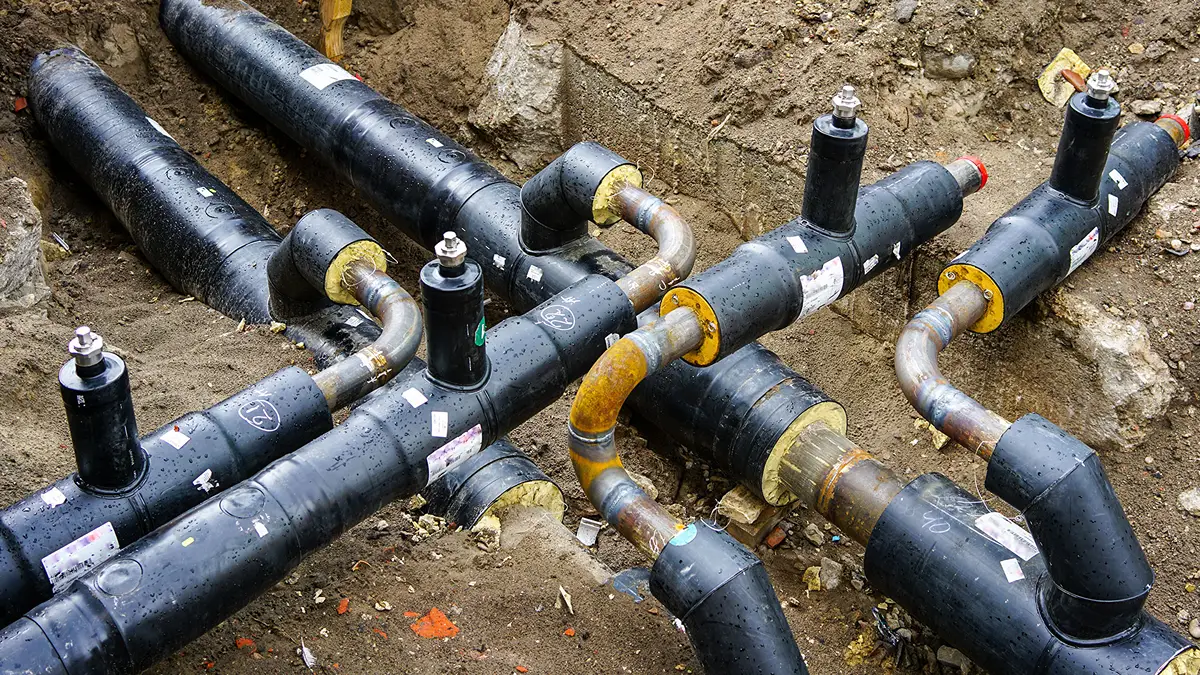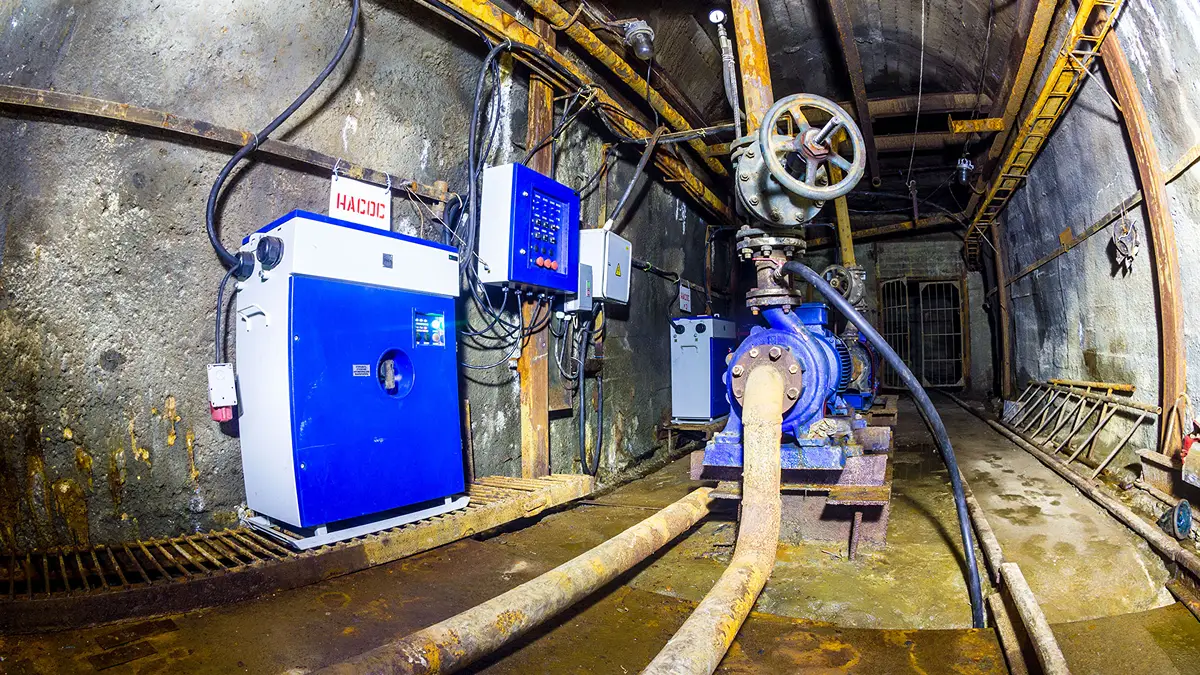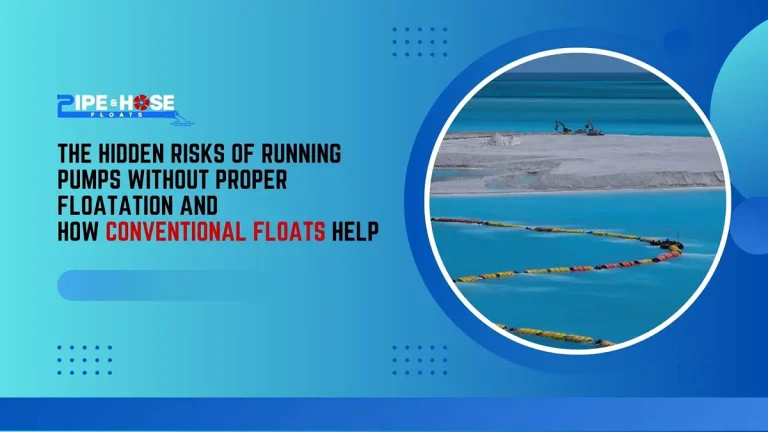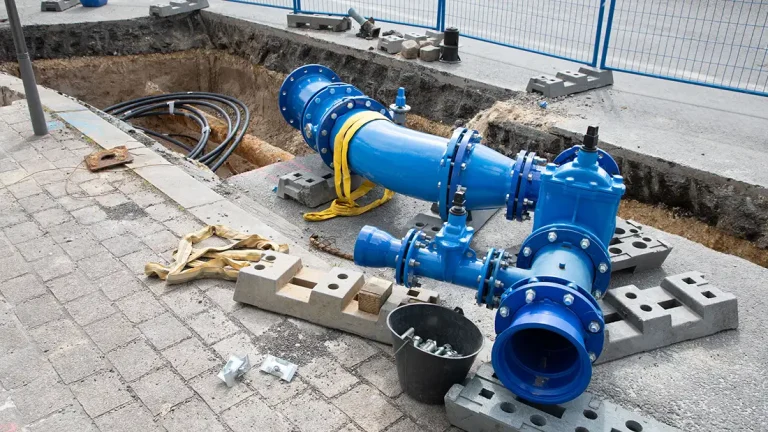Introduction
Infrastructure development has rapidly advanced in recent decades, driven by innovations in engineering, urban expansion, and the growing demand for sustainable systems. Amid this progress, one critical component remains indispensable—the necessity for durable, high-performance industrial pipe fittings. These seemingly modest components may not be prominent to the naked eye, but they serve as the backbone of construction and civil engineering projects around the world.
From skyscrapers and airports to wastewater treatment plants and highways, pipe fittings industrial systems form the essential framework for transporting fluids, gases, slurries, and other materials safely and efficiently. Whether it’s beneath the streets of a bustling metropolis or embedded within a remote mining facility, industrial pipe fittings ensure system integrity under pressure, resist harsh environmental conditions, and comply with strict safety regulations.
This comprehensive guide delves into every aspect of industrial pipe fittings, offering valuable insights into their functionality, significance, and key applications across sectors. We examine the diverse materials used—from carbon steel and ductile iron to high-grade PVC and HDPE—highlighting how each is suited for specific construction or mining environments.
Additionally, this guide takes a deep dive into the unique and rigorous demands of pipe fittings for mining industry operations, where durability, corrosion resistance, and pressure resilience are absolutely vital. Readers will also discover best practices in installation, maintenance strategies for maximizing lifespan, and tips for selecting trusted suppliers who can deliver consistent quality and support.
Whether you’re an engineer, contractor, or procurement specialist, this guide equips you with the knowledge to make informed decisions regarding industrial pipe fittings for any scale of construction or civil engineering project.
Understanding Industrial Pipe Fittings
At their core, industrial pipe fittings are mechanical components used to connect sections of pipe, adapt piping layouts, or terminate flow systems. These fittings are engineered for functionality and resilience, allowing for directional changes, flow regulation, branching, or material adaptation across pipelines.
Common Types of Industrial Pipe Fittings
Some of the most frequently used pipe fittings industrial projects rely on include:
- Elbows (90°, 45°): For directional flow changes.
- Tees and Crosses: For branch piping.
- Reducers and Expanders: To adapt pipe sizes.
- Unions and Couplings: For joining or disassembling sections.
- Bushings, Nipples, and Caps: For custom flow control.
Each type serves a specific function, chosen based on design needs, structural loads, or material flow characteristics.
Why Pipe Fittings Matter in Construction Projects
In construction and civil engineering projects, industrial pipe fittings must do more than simply connect pipelines—they must ensure system integrity under pressure, withstand environmental factors, and comply with strict building codes. The right industrial pipe fittings not only join pipes but also serve as critical junctions for flow control, system maintenance, and safety protocols. Their importance can be seen in several key areas:
1. Maintaining Pressure and Flow Integrity
High-rise buildings, large-scale treatment plants, and stormwater networks rely on industrial pipe fittings to maintain consistent pressure and uninterrupted flow. Poorly designed or improperly installed fittings can lead to pressure drops, turbulent flow, and ultimately, system inefficiencies or shutdowns. The quality of them ensures that water is delivered reliably to every floor of a skyscraper, that fire suppression systems activate instantly, and that chemical delivery pipelines maintain steady, predictable output.
2. Accommodating Structural Stress and Thermal Expansion
Construction environments often involve extreme temperature swings and dynamic structural loads. Industrial pipe fittings engineered with expansion joints, flexible couplings, and specialty bends absorb these stresses, preventing pipe fatigue and catastrophic failure. In seismic zones or steel-framed high-rises, advanced industrial pipe fittings allow for subtle movements without compromising system integrity, reducing maintenance costs, and extending service life.
3. Preventing Leaks and System Failures
Even a single leak in a high-pressure gas or water main can result in safety hazards, environmental damage, and expensive downtime. Stringent building codes mandate the use of certified industrial pipe fittings that pass rigorous hydrostatic and pneumatic tests. These fittings incorporate precision-machined surfaces, durable gaskets, and corrosion-resistant materials, all of which minimize leak risks and help projects meet rigorous inspection standards on the first pass.
4. Supporting Safe Transportation of Water, Air, Chemicals, and More
From potable water lines to hazardous chemical conduits, industrial pipe fittings play a crucial role in isolating, directing, and controlling diverse media. Specialized fittings—such as double-block-and-bleed valves and flanged safety couplings—provide emergency shutoff capabilities, ensuring that any inadvertent spills or pressure surges can be contained quickly and safely.
Civil projects involving water treatment plants, stormwater systems, tunnels, bridges, and high-rise structures depend on the correct application of industrial pipe fittings and pipe fittings industrial designs. By integrating high-quality fittings from the earliest design phase, engineers and contractors guarantee system resilience, compliance, and operational excellence throughout the project’s lifespan.
Key Applications in Civil Engineering
The integration of industrial pipe fittings is critical across a wide range of civil infrastructure applications. From managing municipal water networks to supporting fire suppression and utility systems, the role of pipe fittings industrial designs cannot be overstated. These fittings ensure safe, efficient, and long-lasting performance, even under high-pressure and high-stress conditions commonly found in urban development and heavy-duty projects.
Water Supply and Treatment Systems
Municipal water systems rely heavily on industrial pipe fittings to connect distribution pipelines, filtration modules, and pressure regulation components. These systems must handle vast volumes of water while maintaining safety, hygiene, and leak-proof performance. Properly engineered pipe fittings industrial grade, ensure that clean water is delivered to residential, commercial, and industrial zones without interruption.
Sewage and Drainage Systems
In sewage infrastructure, fittings direct wastewater across long distances, often through challenging terrain and elevation changes. Corrosion-resistant industrial pipe fittings are essential in preventing leaks and environmental contamination. Their ability to withstand both chemical exposure and high flow rates makes them a preferred choice in civil and mining industry waste management systems.
HVAC and Mechanical Systems
Building-wide HVAC systems require precise control of air and refrigerant flow. Industrial pipe fittings such as elbows, reducers, and valves are strategically used to maintain efficiency and support pressure balance in mechanical systems. These pipe fittings industrial solutions are vital for commercial buildings, hospitals, and manufacturing units.
Fire Suppression Networks
Emergency fire systems demand reliability. High-pressure water lines incorporate robust industrial pipe fittings that can endure extreme temperature changes and sudden pressure spikes. These fittings ensure that fire suppression networks activate instantly during critical moments, safeguarding both structures and occupants.
Public Utilities
Electric, gas, and steam distribution systems across urban zones also depend on pipe fittings industrial configurations. Fittings in these networks provide protection and precise control, especially under roads, tunnels, and public infrastructure. In heavy sectors like pipe fittings for mining industry, such fittings are further reinforced to withstand extreme underground conditions and heavy machinery activity.
By leveraging high-performance industrial pipe fittings, civil engineering projects achieve greater efficiency, safety, and longevity across all infrastructure systems.
Material Choices for Industrial Pipe Fittings
The performance of industrial pipe fittings relies heavily on the material used. Each material offers a unique set of mechanical properties, corrosion resistance, and compatibility with transported media.
Steel (Carbon and Stainless)
Ideal for high-pressure systems, steel provides mechanical strength, durability, and corrosion resistance, making it a favorite in both construction and mining industry settings.
PVC and CPVC
Common in low-pressure environments, these plastic fittings are easy to install and corrosion-resistant, making them perfect for drainage, irrigation, and some chemical applications.
HDPE (High-Density Polyethylene)
Highly resistant to impact and chemicals, HDPE fittings are flexible and well-suited for underground and pipe fittings for mining industry systems where terrain shifts and environmental exposure are concerns.
Ductile Iron
Used in buried pipeline systems for its strength, shock absorption, and longevity, especially in water and sewage applications.
Copper and Brass
More common in residential and commercial plumbing, these metals offer excellent thermal properties and antimicrobial benefits.
Choosing the right material for pipe fittings industrial usage depends on operating pressure, fluid type, installation environment, and budget.
How Pipe Fittings Are Used in the Mining Industry
Mining operations are among the most demanding environments in the world, presenting extreme conditions that push infrastructure to its physical limits. In such settings, pipe fittings for mining industry applications are essential, not just for connecting pipes, but for ensuring the long-term performance, safety, and efficiency of complex systems. These fittings must be durable, flexible, and highly resistant to mechanical stress, chemical corrosion, and temperature fluctuations.
Slurry Transport Systems
One of the primary uses of pipe fittings for mining industry is in slurry transport systems, which move abrasive mixtures of crushed rock, sand, and minerals. These materials cause intense wear and tear on piping systems. Industrial pipe fittings designed with abrasion-resistant linings and reinforced joints help prevent premature failure, maintaining productivity and minimizing downtime in mineral extraction operations.
Chemical Processing Lines
In mineral refining and ore processing, pipelines often carry acids, solvents, and other corrosive liquids. Pipe fittings industrial grade are built to withstand such harsh chemical exposure without degrading. This resilience ensures both worker safety and system reliability during chemical processing operations.
Tailings and Wastewater Systems
Managing waste in mining is a constant challenge. Tailings—residual slurry from ore separation—must be transported and stored efficiently. Industrial pipe fittings are used to handle these high-pressure flows, directing them into tailings ponds or treatment facilities. Their robust construction prevents leaks and contamination in environmentally sensitive areas.
Dust Suppression and Water Supply Networks
Maintaining air quality and controlling particulate matter is vital in open-pit and underground mining. Pipe fittings for mining industry are used in water spray systems to suppress dust and in water distribution lines that keep equipment and operations running smoothly.
In all these applications, it provides the strength, corrosion resistance, and adaptability needed to operate in rugged, remote mining environments, whether transporting slurries, chemicals, or water, pipe fittings industrial technology remains the backbone of mining infrastructure.
Installation Considerations and Best Practices
Improper installation of pipe fittings industrial systems can result in leaks, structural damage, or full-scale system failures. Following best practices during installation is crucial.
1. Detailed Planning and Mapping
Use BIM (Building Information Modeling) to plan fitting types and locations based on flow paths and load stresses.
2. Use of Proper Tools and Techniques
Welding, threading, flanging, or compression joining must match the material and application.
3. Inspection Before and After Installation
Visual and pressure testing ensure no weak points or incorrect assemblies.
4. Sealant and Gasket Use
Use manufacturer-approved sealants and gaskets compatible with pipe materials to prevent leaks and degradation.
Whether for a skyscraper’s water system or remote pipe fittings for mining industry operations, precision in installation ensures longevity and functionality.
Maintenance Strategies for Pipe Fittings
Once installed, industrial pipe fittings must be inspected and maintained to avoid operational disruptions. Over time, corrosion, vibration, thermal cycling, and pressure can degrade system performance.
Scheduled Maintenance Protocols
- Visual inspections for cracks and corrosion
- Leak detection systems (acoustic, infrared, or ultrasonic)
- Pressure testing on critical systems
Proactive Component Replacement
Rather than reactive repairs, scheduled replacements of fittings can reduce downtime and extend infrastructure lifespan.
Maintenance is particularly critical in pipe fittings for mining industry systems, where accessibility is limited and system failure can halt operations.
Environmental and Regulatory Compliance
Construction and engineering projects are increasingly guided by environmental sustainability and regulatory standards. These impact how industrial pipe fittings are designed, installed, and maintained.
Key Regulations and Standards Include:
- ASME/ANSI: Covers pressure and temperature ratings.
- ASTM: Ensures material consistency and performance.
- ISO/BIS: International and national compliance.
- EPA and Local Water Authorities: Set guidelines for leakage, material toxicity, and environmental impact.
New green building initiatives also encourage the use of recyclable or low-impact materials for pipe fittings industrial systems.
Supplier Selection: What to Look For
Not all suppliers are equal, and selecting the right one for your industrial pipe fittings needs can drastically affect your project outcomes.
Key Considerations Include:
- Reputation and Experience in construction and pipe fittings for mining industry
- Product Range that covers diverse fitting types and materials
- Customization Services for non-standard installations
- Certifications like ISO 9001, CE, and ASTM
- Technical Support and Training
- Inventory Availability for timely supply
Reliable suppliers also offer after-sales service and on-site support, critical for remote installations such as mining or energy sector applications.
Future Innovations in Industrial Pipe Fittings
The world of pipe fittings industrial usage is rapidly evolving with technological advancements and sustainability trends. Some notable innovations include:
1. Smart Pipe Fittings
Embedded sensors for flow, temperature, and pressure monitoring allow real-time diagnostics and predictive maintenance.
2. Advanced Coatings
Anti-corrosive and antimicrobial coatings increase the lifespan of fittings in water and chemical applications.
3. Additive Manufacturing
3D printing enables faster prototyping and customization of industrial pipe fittings, especially for unique or hard-to-source components.
4. Modular Systems
Prefabricated pipe and fitting systems speed up construction and reduce on-site errors.
These trends are redefining how engineers and project managers design, install, and maintain infrastructure systems.
Conclusion
Industrial pipe fittings are more than just connectors—they are integral to the reliability, efficiency, and safety of civil and mining infrastructure. Whether you’re installing a wastewater system under a city or laying down pipelines in a high-pressure mining site, the success of your project depends on the quality and performance of your pipe fittings industrial network.
Understanding the types, materials, and best practices—as well as the specific needs of pipe fittings for mining industry—can help you make informed decisions, reduce risks, and increase project longevity.
Choosing the right fittings and working with reputable suppliers is not just a procurement task—it’s a strategic decision that impacts operational reliability, compliance, and long-term value.







